#1916 Easter Rising
Text
Kilmainham Gaol
Kilmainham Gaol is one of the largest unoccupied gaols in Europe, covering some of the most heroic and tragic events in Ireland’s emergence as a modern nation from the 1780s to the 1920s. Attractions include a major exhibition detailing the political and penal history of the prison and its restoration.
Located approximately two miles outside of Dublin city centre, it was built as a county gaol to…
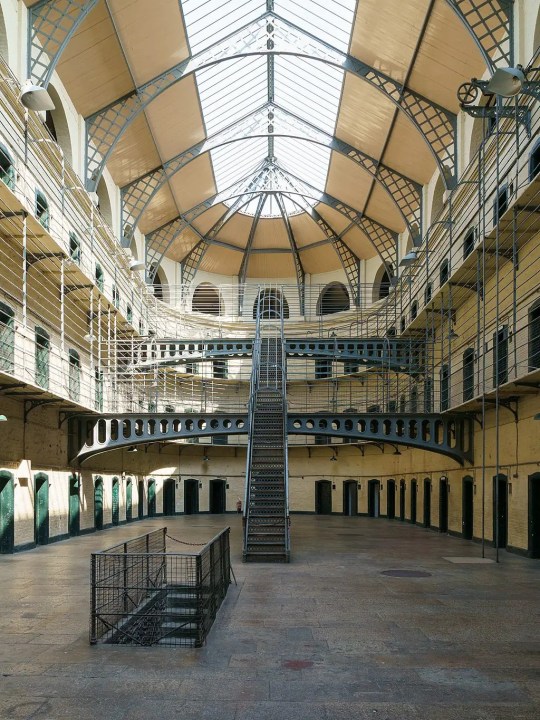
View On WordPress
#1798 United Irishmen Rebellion#1916 Easter Rising#Dublin#History#History of Ireland#Ireland#Irish Civil War#Irish History#Irish War of Independence#Kilmainham Courthouse#Kilmainham Gaol#Office of Public Works#OPW#Thomas Francis Meagher
27 notes
·
View notes
Text

Irish revolutionary and politician Constance Markievicz photographed in uniform by Keogh Brothers, Dublin, 1916 (courtesy of this article)
#lesbian yearning#sapphic#constance markievicz#irish history#saoirse#irish freedom#1916 easter rising#photography#cw gun
25 notes
·
View notes
Text
The song was written in 1985 by brothers Frank and Seán O'Meara and is about artist Grace Gifford who married Joseph Mary Plunkett in the chapel at Kilmainham Gaol just hours before he was executed by a firing squad in 1916.
2 notes
·
View notes
Text
presented without comment.

#james connolly#coronation#king charles iii#irish#irish nationalism#socialism#marxism#irish republicanism#anti-monarchy#1916 rising#easter rising#irish republic
138 notes
·
View notes
Text

Handsome I am, a red-blooded man
Stand for what’s right, or as oft as I can
Stripped of my honours, though no crimes were mine
Now a name to forget with the passing of time. . .
Black Diaries
Digital
2023
11 notes
·
View notes
Text
[I]n the period of eerie suspension before the explosion [...], those who registered the [...] uncanny [...] experience[d] a condition that [...] would become familiar to everyone living in a targeted city during the Cold War: the sense that the present survival and flourishing of the city were simultaneously underwritten and radically threatened by its identity as a nuclear target. [...] [I]nhabitants of Cold War cities [...] became accustomed to a more overt and permanent variant of the uncanny frisson [...]. Lobbing incendiaries and explosives through the roofs and windows […], the British gunners gutted portions of the Dublin city center; during the week of the Rising, 500 people died […]. The more frequent and extreme outbreaks of traumatic violence in everyday urban life […], in the early-twentieth-century imaginary, the city had begun to host new forms of sudden mass death and severe physical destruction.
Cities had, of course, been sites of mass death before 1916.
But the Easter Rising differed from nineteenth-century urban barricade fighting in the use, principally by British soldiers, of more precise and destructive weapons; fired from the ground, from rooftops, and from gunships in the Liffey, the new cannons, incendiaries, and machine guns rapidly reduced whole blocks of the city center to ruins. These emerging military technologies and strategies link the Rising to the Great War then raging in England and on the Continent, whose fields and cities had become proving grounds for new weaponry and modes of warfare. In Ireland and the Great War, [...] “Like the Western Front [the Easter Rising] became a war of attrition, and the lessons of the Western Front were taught again in the streets of Dublin.” […]
---
Though the shelling of Dublin in 1916 reminded observers of Ypres, Louvain, and other European cities ruined in the Great War, it might as credibly have called to mind a different list: Canton, Kagoshima, and Alexandria. During the second half of the nineteenth century, British naval bombardments made rubble of these coastal cities […].
The naval bombardment of undefended cities and civilians, particularly those in colonial territories, paved the way for the first airplane bombardments, in which the imperial powers of Europe dropped bombs on nonwhite, non-European adversaries and anticolonial forces.
Italy pioneered airplane bombardment in 1911 by bombing Arab oases outside Tripoli; British planes bombed Pathans in India in 1915, Egyptian revolutionaries and the Sultan of Farfur in 1916, a Mashud uprising on the Indian-Afghanistan border in 1917, and Somaliland and the Afghan cities of Dacca, Jalalabad, and Kabul in 1919.
---
Several years before the inhabitants of European cities experienced it, aerial bombardment had been established as a uniquely colonial nightmare. [...] [T]he initial use of airplane bombs against colonies was foreseen and even fed by a racist fantasy pervading early-twentieth-century European science fiction, a fantasy of bombing subject races either into submission or out of existence. The willingness of several signatory nations to ignore Article 25 when bombing nonwhite soldiers and civilians made colonial towns and cities the first civilian spaces secured by the implied threat of bombardment from above.
In the world war […] the brief tenure of aerial bombardment as an exclusively colonial technique ended when imperial powers launched the first bombing campaigns against the cities of other imperial powers, initiating a change that would later find its apogee in the nuclear condition: the reconfiguration of the major metropolis as target.
---
Text by: Paul K. Saint-Amour. “Bombing and the Symptom: Traumatic Earliness and the Nuclear Uncanny.” Diacritics Volume 30 Number 4. Winter 2000. [Bold emphasis and some paragraph breaks/contractions added by me.]
21 notes
·
View notes
Text
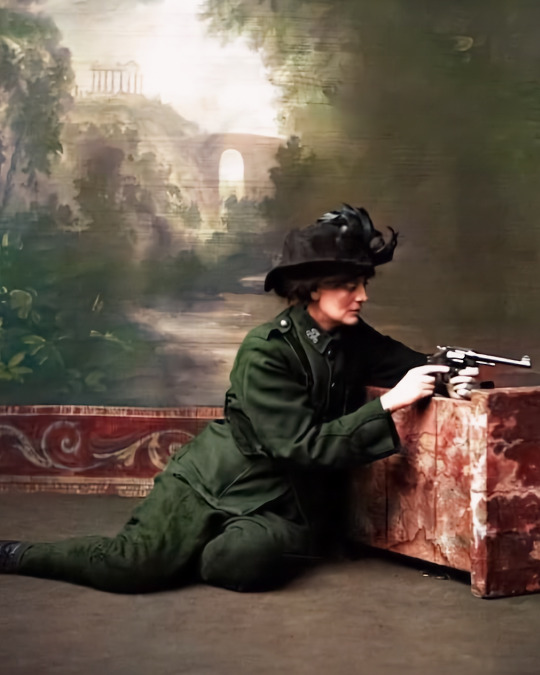



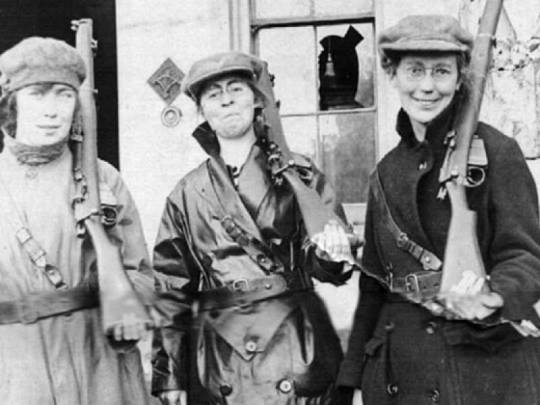

Easter Rising, 1916
19 notes
·
View notes
Text
My mum: So he was this great irish hero who went down in history for-
Me: fighting the british?
My mum: fighting the british!
#ireland#irish#irish history#caramelfantic#colonisation#british empire#1916#easter rising#war of independence#oliver cromwell
6 notes
·
View notes
Text
Today's Locked Tune is for Hot Sauce, the Gang, and New Rho: Zombie, by the Cranberries


#the locked tomb#the locked tunes#b: the cranberries#g: grunge#g: alt rock#nona the ninth#ntn spoilers#a note on this song: The Cranberries are an Irish band from Limrick#this song released in 1994 is about The Troubles: an armed conflict in Ireland Northern Ireland and England from 1968 to 1998#between the Irish Nationalist movement and the British army#I'm using it here for the fictional colonial struggle of New Rho but wanted to include a note on the real history behind it#the date cited in the song - 1916 - is the date of the Easter Rising against British rule#which is popularly held to have lead to the creation of an independant Irish state four years later#Ireland had at that time been under English colonial rule for over 600 years#okay thats your history lesson for today I love you all#class dismissed#Spotify
12 notes
·
View notes
Text
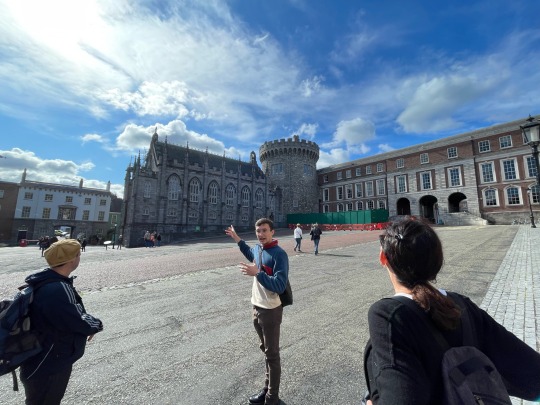
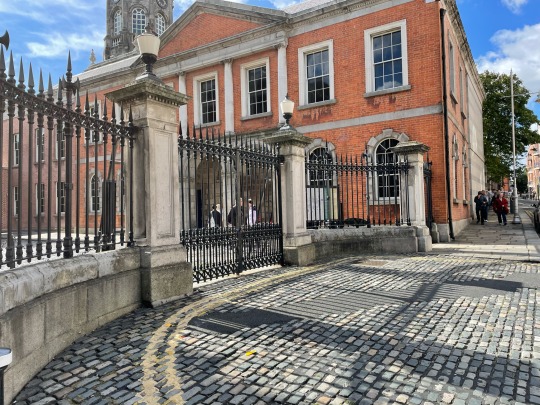


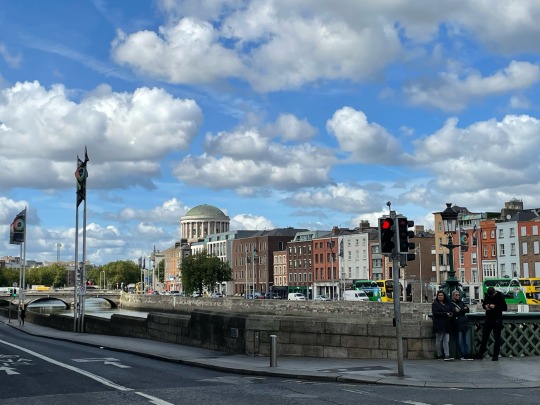
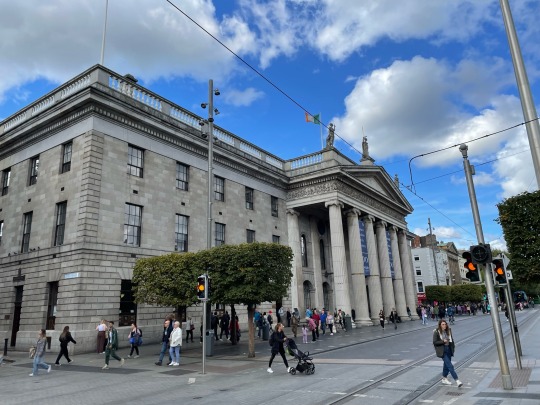
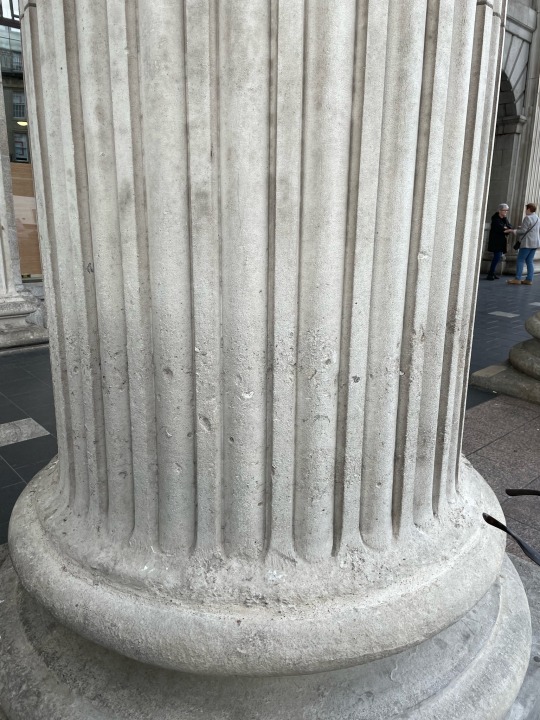
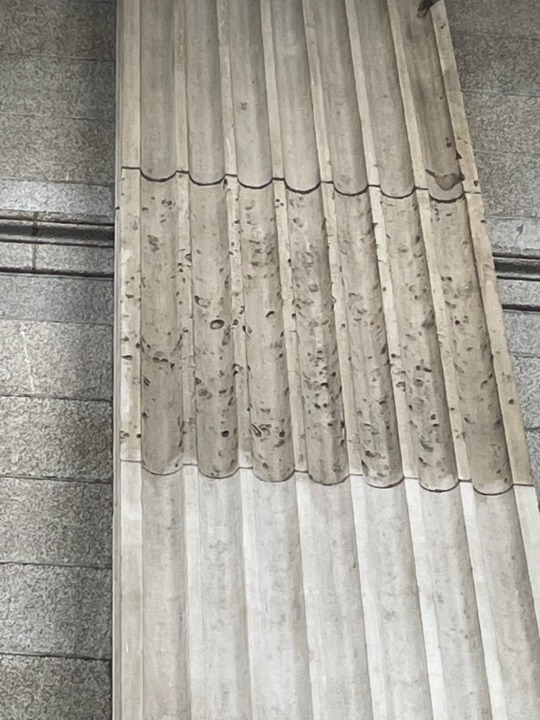


Today I closed out my visit to Ireland with a tour I have long anticipated: a walking tour of the 1916 Easter Uprising.
It’s no exaggeration to say that this event is when modern Ireland was born. The Easter Rising lasted only five days and ended in failure, but it’s effects were far reaching. In fact, all the rebel leaders knew it would end in defeat, but they chose to do so anyway in the hopes of sending a message to both the British who put them down and to Irishmen nationwide.
Irishmen hold men like Padraig Pearse and James Connolly as we Americans view George Washington or Thomas Jefferson. Standing where the proclamation of an Irish Republic was read out is no different from standing in Independence Hall or on the fields of Gettysburg.
The story of the Easter Rising is one of heroism, tragedy, and patriotism. A story of a nation striking out for freedom. A story of men who laid down everything for a cause, a cause that would eventually be realized in the eventual independence of Ireland.
And it’s a story that I intend to tell in a future novel. ;)
With this, my time in Ireland comes to an end, but I won’t be coming home just yet. I’ll be making a stop in Iceland for one day to see all it has and finally returning home.
Pictured: Dublin Castle, Cork Hill gate, Four Courts seen from Gratton Bridge, and the General Post Office (GPO).
#historyman's musing#ireland#vacation photos#photos#dublin#easter rising#1916 rebellion#Easter rebellion#1916#irish history#20th century history
3 notes
·
View notes
Text
I love how perpetually done Connolly looks throughout the entirety of “The Bloody Irish!”
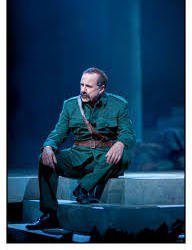
#Apologies for the poor quality#It was all I could find#This poor man#James Connolly#The Bloody Irish!#Easter Rising 1916#Irish history
2 notes
·
View notes
Text
#OTD in 1914 – Cumann na mBan, Irish women’s Republican movement, was founded.
Ní saoirse go saoirse na mban.
Over 100 women gathered in Dublin to discuss the role of women in the lead-up to revolution. The meeting, at Wynn’s Hotel, was presided over by Agnes O’Farrelly.
The first provisional committee of Cumann na mBan included Agnes MacNeill, Nancy O’Rahilly, Mary Colum, Jenny Wyse Power, Louise Gavan Duffy and Elizabeth Bloxham.
They adopted a constitution which stated…

View On WordPress
#1916 Easter Rising#Agnes MacNeill#Agnes O’Farrelly#Constance Markievicz#Cumann na mBan#Dublin#Elizabeth Bloxham#History#History of Ireland#Inghinidhe na nÉireann#IRA#Ireland#Irish Citizen#Irish Civil War#Irish War of Independence#Jenny Wyse-Power#Kathleen Clarke#Louise Gavant Duffy#Mary Colum#Mary MacSwiney#Muriel MacSwiney#Nancy O’Rahilly#Nora Connolly#Wynn&039;s Hotel
14 notes
·
View notes
Text

Rebellion (2016) Young Guns
S1E1
A group of young men and women in Dublin in 1916 are embroiled in a fight for independence. For our young protagonists the world will never be the same again.
*Frances O'Flaherty is seen painting an "Irish Republic" flag. This flag was actually sewn by Mary Shannon and painted by Theobald Wolfe Tone FitzGerald and flew above the GPO during Easter Week. After Easter Week, it was seized by British Soldiers and kept in the Imperial War Museum in London. It was returned to Ireland as part of the 50th anniversary commemorations. The flag is now in the National Museum of Ireland.
#Rebellion#2016#Young guns#S1E1#drama#history#war#period drama#Ireland#Easter rising#revolution#1916#Dublin#just watched#Ruth Bradley#tv series
0 notes
Text
Inside Ireland’s most turbulent times as heartbreaking tribute for first child killed in Easter 1916 Rising unveiled | In Trend Today
Inside Ireland’s most turbulent times as heartbreaking tribute for first child killed in Easter 1916 Rising unveiled
Read Full Text
or
Full Article on MAG NEWS

View On WordPress
#Celebrities#Inside Ireland’s most turbulent times as heartbreaking tribute for first child killed in Easter 1916 Rising unveiled#Money#Motors#Politics#ShowBiz#Sport#Tech#Trends#UK#US#World
0 notes
Text
Inside Ireland’s most turbulent times as heartbreaking tribute for first child killed in Easter 1916 Rising unveiled | In Trend Today
Inside Ireland’s most turbulent times as heartbreaking tribute for first child killed in Easter 1916 Rising unveiled
Read Full Text
or
Full Article on MAG NEWS
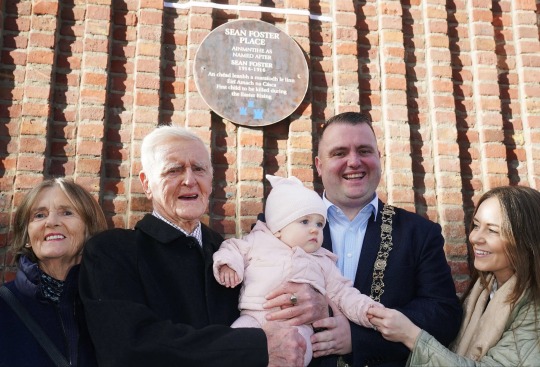
View On WordPress
#Celebrities#Inside Ireland’s most turbulent times as heartbreaking tribute for first child killed in Easter 1916 Rising unveiled#Money#Motors#Politics#ShowBiz#Sport#Tech#UK#US#World
0 notes
Text
DESCRIBED BY SOME AS A STARTLINGLY MORBID METAL SCULPTURE
“Proclamation” by Rowan Gillespie is a permanent outdoor sculpture honouring the leaders of the Easter Rising, and the authors of the Irish proclamation of Independence. It stands solemnly across the street from the notorious Kilmainham Gaol where the pro
PROCLAMATION BY ROWAN GILLESPIE
I have seen this described as startlingly morbid memorial sculpture located across the street from one of Ireland’s most infamous prisons.
“Proclamation” by Rowan Gillespie is a permanent outdoor sculpture honouring the leaders of the Easter Rising, and the authors of the Irish proclamation of Independence. It stands solemnly across the street from the notorious…
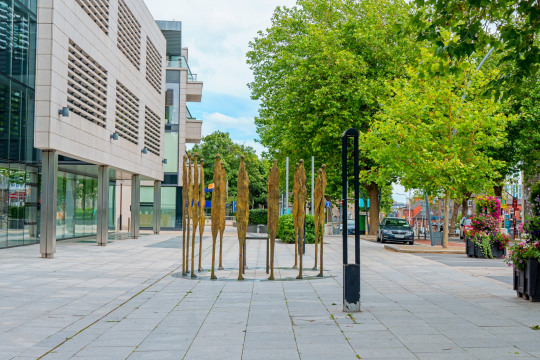
View On WordPress
#1916 rising#honouring the leaders of the Easter Rising#Ireland’s most infamous prison#Metal Sculpture#morbid sculpture#permanent outdoor sculpture#Proclamation#Rowan Gillespie#startlingly morbid memorial sculpture#the authors of the Irish proclamation of Independence
0 notes